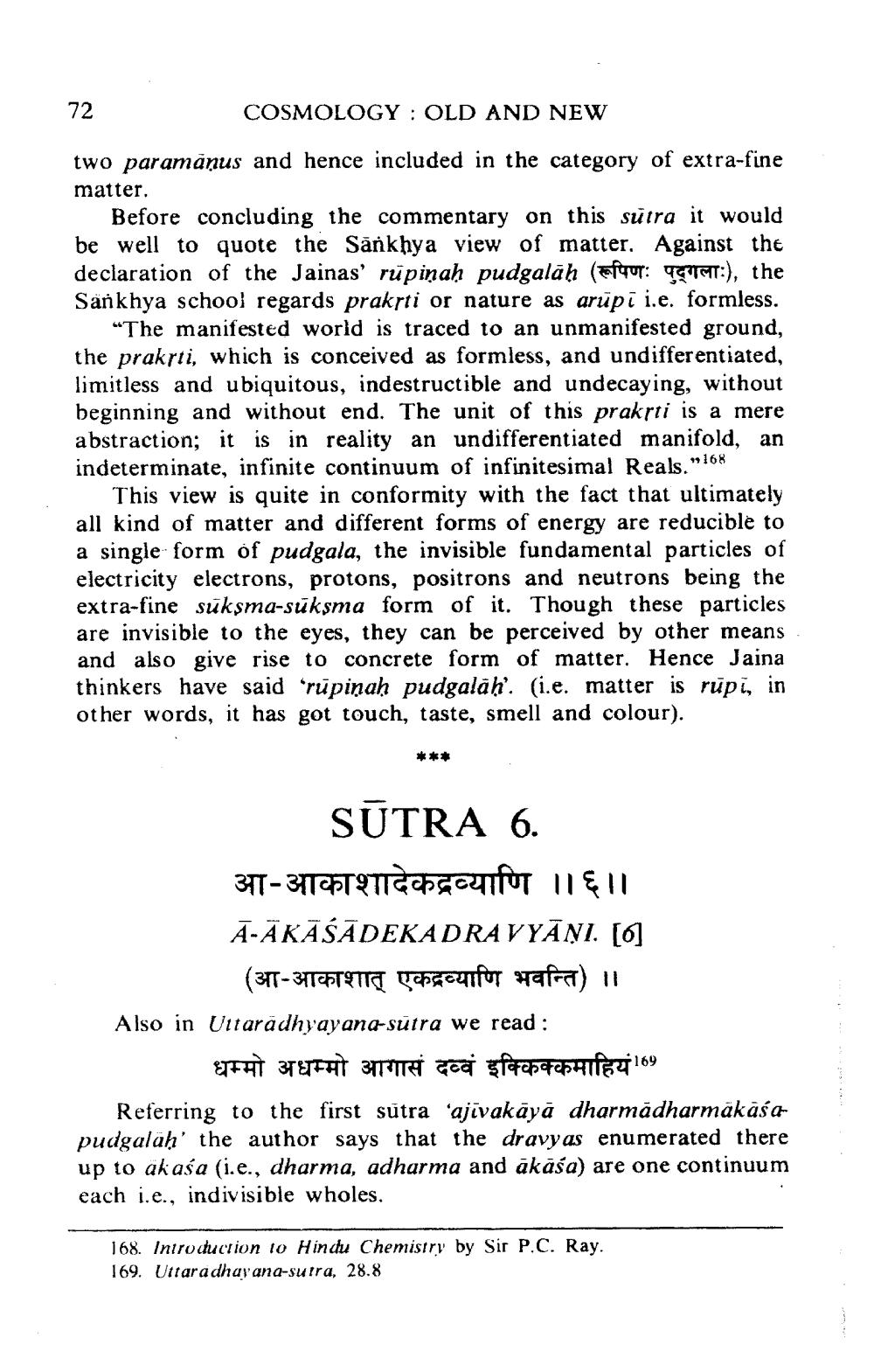________________
COSMOLOGY : OLD AND NEW
two paramāņus and hence included in the category of extra-fine matter.
Before concluding the commentary on this sutra it would be well to quote the Sankhya view of matter. Against the declaration of the Jainas' rūpiņaḥ pudgalāh (efur: EGTETT:), the Sankhya school regards praksti or nature as arūpi i.e. formless.
“The manifested world is traced to an unmanifested ground, the prakrti, which is conceived as formless, and undifferentiated, limitless and ubiquitous, indestructible and undecaying, without beginning and without end. The unit of this prakrti is a mere abstraction; it is in reality an undifferentiated manifold, an indeterminate, infinite continuum of infinitesimal Reals."168
This view is quite in conformity with the fact that ultimately all kind of matter and different forms of energy are reducible to a single form of pudgala, the invisible fundamental particles of electricity electrons, protons, positrons and neutrons being the extra-fine sūksma-sūksma form of it. Though these particles are invisible to the eyes, they can be perceived by other means and also give rise to concrete form of matter. Hence Jaina thinkers have said “rūpinah pudgalāḥ'. (i.e. matter is rupi, in other words, it has got touch, taste, smell and colour).
***
SUTRA 6. 317-31T271 Cobcou for 11 & 111 Ā-ĀKĀSĀDEKADRAVYĀŅI. [6]
(311-34TCFT971 gageutfor vafrat) 11 Also in Uttaradhyayana-sutra we read :
धम्मो अधम्मो आगासं दव्वं इक्किक्कमाहियं169 Referring to the first sūtra ‘ajivakāyā dharmādharmākāśa pudgalāḥ' the author says that the dravyas enumerated there up to akaśa (i.e., dharma, adharma and ākāśa) are one continuum each i.e., indivisible wholes.
168. Introduction to Hindu Chemistry by Sir P.C. Ray. 169. Uttara dhayana-sutra, 28.8




